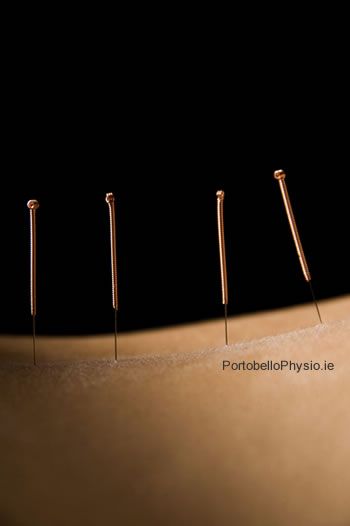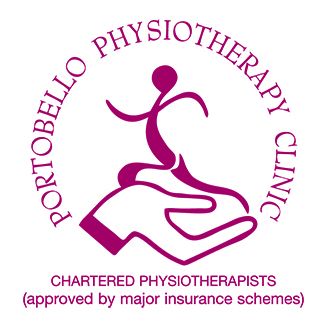Chartered Physiotherapists
Specialists in Musculoskeletal Physiotherapy
Dublin Acupuncture

Acupuncture is a treatment technique used for many painful conditions such as arthritic pain, myofascial pain, low back pain, sciatica/nerve pain, tennis elbow, fibromyalgia, asthma and headaches/migraines to name a few.
Acupuncture was started over 2000 years ago and is still used today as part of Traditional Chinese Medicine (TCM). In TCM, it is believed that acupuncture is used to restore the flow of energy (known as Qi) throughout the body which in turn will return the body to normal function. TCM believes that incorrect flow or imbalances in the flow of Qi leads to ailments of the body. Acupuncture involves the insertion of very thin acupuncture needles into specific acupuncture points on the body. These acupuncture points lay along lines of energy in the body known as meridians. Meridians cover the body, back, head, face, upper limb and lower limb, hands and feet. TCM believes that by inserting the needles into the specific acupuncture points will correct the flow of Qi and therefore restore normal bodily function.
However, the Western world has a great interest in acupuncture and research in Europe and the United States has produced some promising evidence to support the use of acupuncture for many conditions. As a result, the Western approach to acupuncture is more scientifically based and there is a growing body of evidence to support the use of acupuncture to reduce pain allowing the body to function normally. The Western approach to acupuncture uses the same acupuncture points and meridians but has a greater scientific understanding as to how inserting a needle into these points will affect the body from a physiological perspective.
Research has shown that acupuncture has a local and distal effect on the body. To explain this we have to think of the body as a whole. If a needle is inserted to the body it will create micro-trauma in the area and therefore start the inflammatory response (normal healing response). This can be useful in chronic conditions. Also, research has shown that the use of acupuncture stimulates the central nervous system (CNS) to produce natural pain controlling hormones (known as opiods) which will reduce an individual’s pain. Acupuncture also works by blocking neurotransmitters responsible for sending painful signals to the brain. For example, if acupuncturing an arthritic knee there will be a local effect at the knee where the needles have been inserted (causing micro-trauma) which will restart the bodies natural healing response. A distal effect will also take place as the transmission of the painful signals will be blocked and the body will produce opiods to help to control the pain. Therefore, these mechanisms will aim to restore the body to normal function by stimulating natural healing response and natural pain control.
Acupuncture is not a painful treatment. You may feel a small scratch as the needle is inserted and it is usually pain free when the needle is removed. There are very little side effects to acupuncture however some people may feel fatigued after treatment. In TCM it is believed that people who have a strong reaction to acupuncture will gain the most benefits from the treatment.
Acupuncture is a recognised treatment that is carried out by a Chartered Physiotherapist who has had specific training in this area. The needles used are manufactured to the same standards as a surgical scalpel and syringe. They are only used once and are discarded for safe disposal after each treatment session.
Ready to take the next step?
Learn more about our Patient-Centered Approach to Care or schedule a new patient consultation.


